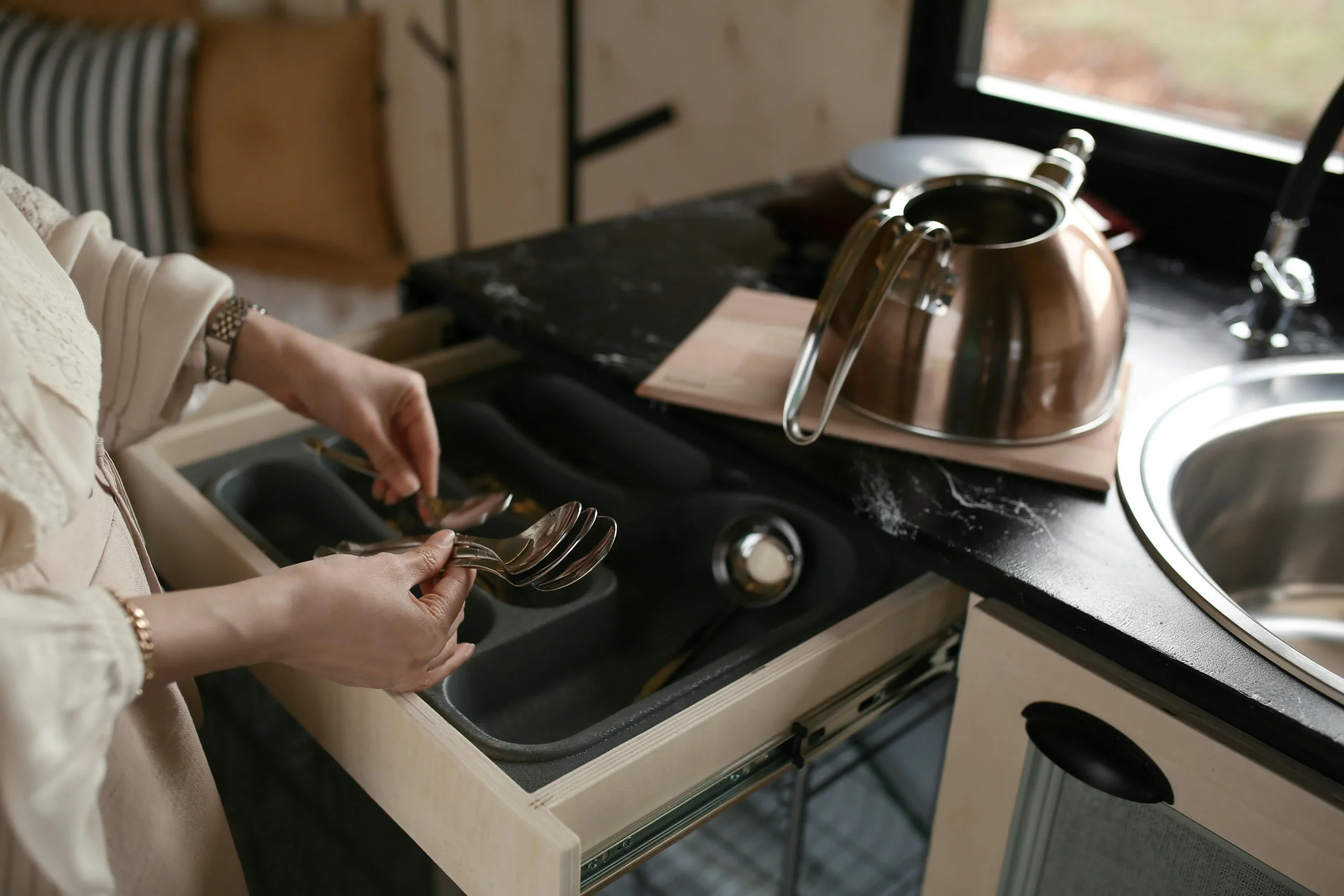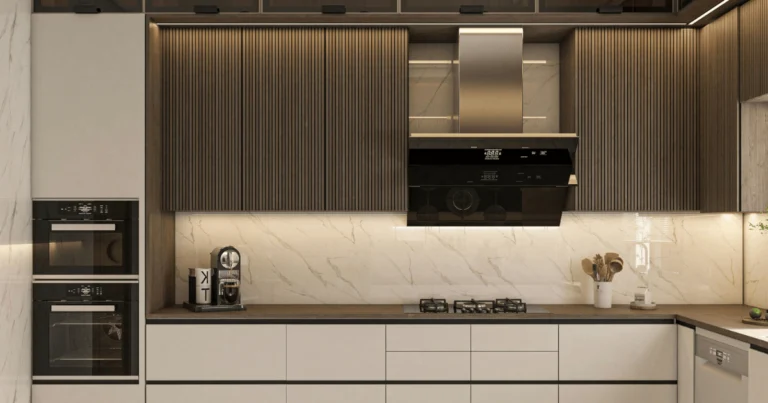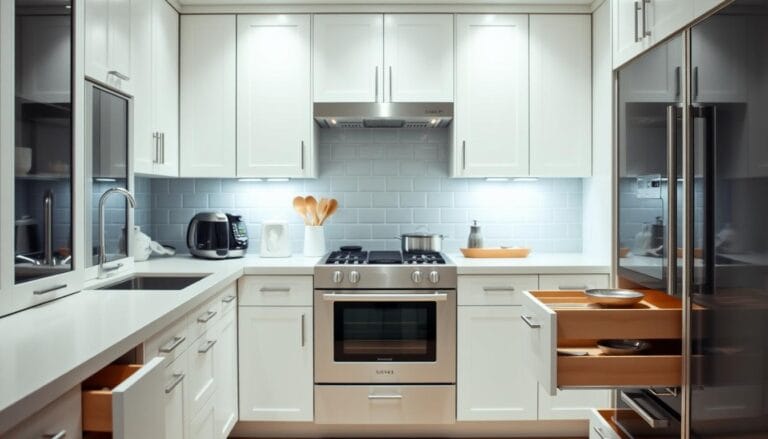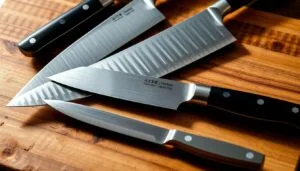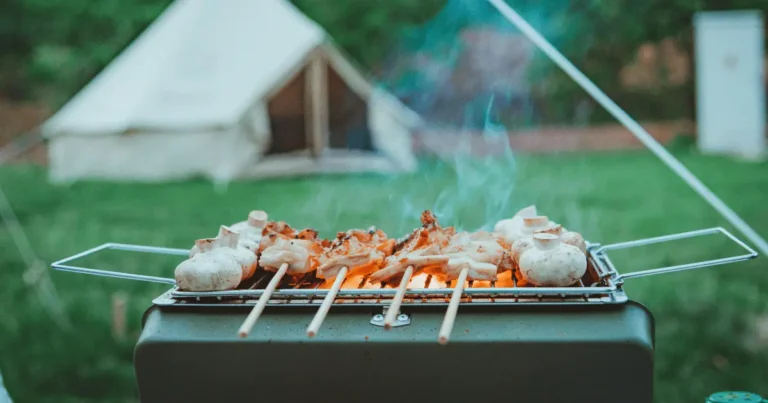How to Organize Kitchen: Create a Stress-Free and Tidy Space
Table of Contents
How to organize kitchen efficiently? The kitchen is more than just a place where meals come together—it’s the command center of most homes, where families gather, conversations flow, and memories are created alongside favorite recipes. Yet this essential space often becomes overwhelmed with clutter, leading to frustration when you can’t find what you need exactly when you need it. A disorganized kitchen not only wastes precious time but can also diminish your enthusiasm for cooking altogether.
This comprehensive guide will walk you through transforming your kitchen from a chaotic jumble into a streamlined, functional space that makes meal preparation a pleasure rather than a chore. We’ll break down how to organize kitchen spaces into manageable steps—preparation, clearing, sorting, and strategic arrangement—followed by practical tips for maintaining your newly organized kitchen for years to come.
Preparation: Understanding Your Kitchen Needs
Before diving into the physical work of organizing, take time to analyze how your kitchen functions. This crucial planning phase ensures your organization system aligns with your actual habits and requirements.
Assess Your Kitchen Usage Patterns
Start by observing your kitchen dynamics during a typical week. Which areas see the heaviest traffic? Perhaps the island becomes command central for homework, bill-paying, and casual dining, while the counter near the refrigerator serves as the go-to snack preparation zone.
Next, identify congestion points—areas where multiple activities collide, creating bottlenecks. Do you find yourself constantly shuffling items to make workspace for meal prep? Is there always someone reaching for a glass while another person is trying to plate a meal?
Finally, note recurring issues that plague your kitchen efficiency. Do containers avalanche whenever you open a particular cabinet? Are cooking tools consistently misplaced or difficult to access when needed?
Organize by Functional Zones
The zone approach to kitchen organization revolutionizes functionality by grouping related items near where they’re used. When learning how to organize kitchen spaces effectively, consider establishing these essential zones:
- Cleaning Zone: Near the sink, include dish soap, brushes, towels, and trash/recycling containers.
- Food Storage Zone: Encompassing pantry space and refrigerator areas for organized food storage.
- Preparation Zone: Ample counter space with cutting boards, knives, and measuring tools nearby.
- Cooking Zone: Surrounding the stove and oven, with pots, pans, and cooking utensils within easy reach.
- Serving Zone: Near the dining area, containing plates, glasses, and serving pieces.
You might also create specialized zones based on your family’s unique needs—perhaps a baking station, coffee bar, or lunch-packing area for busy mornings.
Evaluate Storage Requirements
Before purchasing organizational tools, assess what you truly need. Take inventory of problem areas and imagine potential solutions. Would drawer dividers tame your utensil chaos? Could shelf risers maximize vertical space in cabinets? Making this assessment before shopping prevents wasteful purchases of organizational products that don’t address your specific challenges.
Clearing: Creating a Clean Slate
With your plan in place, it’s time to start with a blank canvas by completely emptying your kitchen storage areas.
Empty All Storage Spaces
This step might seem drastic, but it’s essential for thorough organization. Remove everything—yes, everything—from your kitchen storage spaces, except perhaps refrigerated items. This comprehensive clearing allows you to truly see what you have and makes deep cleaning possible.
Protect Your Surfaces
Before placing items on countertops and tables, lay down towels or blankets to prevent scratches and damage. This simple precaution protects your investments during the organizational process.
Deep Clean Empty Spaces
Take advantage of empty cabinets and drawers to give them a proper cleaning:
- Wipe away accumulated crumbs and sticky residue
- Remove dust from shelves, especially in high or rarely accessed areas
- Consider replacing or adding shelf liners for protection and easier future cleaning
Sorting: Making Thoughtful Decisions
With everything removed from storage, you can now make informed decisions about what deserves to reclaim valuable kitchen real estate.
Consolidate All Kitchen Items
Gather everything from your kitchen in one area, if possible. This complete visual inventory helps prevent overlooking items and provides a comprehensive picture of your possessions.
Create Sorting Categories
Set up four distinct containers labeled:
- “Keep”: For items that will return to your kitchen
- “Recycle”: For recyclable items that no longer serve you
- “Give”: For donations of usable but unnecessary items
- “Return to its place”: For items that belong elsewhere in your home
This systematic approach prevents the common mistake of simply shuffling clutter from one spot to another.
Group Similar Items Together
A key principle in how to organize kitchen items effectively is grouping like with like:
- Appliances with appliances
- Bakeware with bakeware
- Drinkware with drinkware
This approach illuminates unnecessary duplicates. Do you really need six spatulas or four can openers? Probably not.
Eliminate Excess and Broken Items
Be ruthless about removing:
- Excess duplicates that don’t serve a purpose
- Broken or damaged items you’ve been meaning to fix
- Incomplete sets missing essential pieces
- Gadgets that promised convenience but delivered disappointment
Assess Small Appliance Value
Small appliances often consume significant storage space. Evaluate each one honestly—if you haven’t used it in a year, it’s likely not essential to your cooking routine and could be donated to someone who will appreciate it more.
Strategic Arrangement: Creating Intuitive Systems
Now comes the rewarding part—strategically returning items to create a functional kitchen arrangement that makes sense for your daily life.
Position Items Based on Usage Patterns
When considering how to organize kitchen cabinets and drawers, think about frequency of use and logical workflow:
- Store everyday dishes and glasses near the dishwasher for efficient unloading
- Create dedicated zones like a coffee station with beans, grinder, and mugs all together
- Place items where they’re used: cooking utensils near the stove, cutting boards in the prep area
- Reserve prime real estate (middle shelves, easy-reach drawers) for frequently used items
Relocate Seasonal and Specialty Items
Not everything deserves valuable kitchen space. Consider moving seldom-used items to secondary storage areas:
- Holiday-specific serveware to the attic or basement
- Oversized roasting pans to garage shelving
- Party platters to dining room cabinets
- Specialized appliances to less accessible areas
Implement Organizational Solutions
Thoughtfully selected organizational aids can dramatically improve functionality:
- Drawer dividers for utensils and small tools
- Vertical organizers for baking sheets and cutting boards
- Door-mounted racks for spices or cleaning supplies
- Wall or ceiling pot racks to free up cabinet space
- Magnetic strips for knife storage or spice containers
Use Transparent Storage and Clear Labels
Transparent containers reveal contents at a glance, while cohesive containers create visual harmony. Label everything—containers, shelves, and even zones—to maintain the system, especially in households with multiple residents.
Maintenance: Preserving Your Organized Kitchen
Creating an organized kitchen is an achievement; maintaining it is an ongoing process.
Label Strategically for Family Cooperation
Clear labeling eliminates the “I didn’t know where it goes” excuse and empowers everyone to participate in keeping the kitchen orderly.
Schedule Regular Reassessments
Kitchen organization isn’t a one-and-done project. Plan quarterly reassessments to evaluate what’s working and what needs tweaking. Seasonal adjustments might include bringing holiday bakeware forward in November or positioning canning supplies prominently during harvest season.
Monitor Problem Categories
Be vigilant about items that tend to multiply: plastic containers, reusable shopping bags, and promotional cups have a way of overtaking storage space if not regularly culled.
By following this systematic approach to how to organize kitchen spaces, you’ll create a functional environment that serves your needs and reflects your priorities. An organized kitchen doesn’t just look better—it fundamentally transforms your relationship with cooking, making daily meal preparation more efficient and enjoyable. The time invested in organizing this essential space pays dividends in reduced stress and increased culinary creativity for years to come.
Tell Us What You Think: Your Input Matters
There are no reviews yet. Be the first one to write one.

